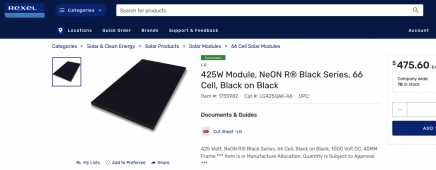If I were to install RSD modules on my DC panels, it would be purely to protect firemen. That’s simple because you just power the heartbeat transmitter with grid power so that if the grid goes down or the main breaker trips, DC panels are disconnected.I ordered the Tigo RSD and dual (2 panel) boxes to mount on the panels.
I don't think the Midnight has any way to interface with the Tigo RSD and that doesn't appear to be required. I screwed up and ordered parts before getting my permits approved, so I'm rushing to get my permit package together this weekend.
I believe midnight charge controllers include a dry contact relay. There might be settings to open the relay in case of an arc fault or ground fault. I haven't looked into this, but in theory it would work if:
I am remembering correctly and it is a dry contact.
And
If midnight has the option to connect the aux output to an arc fault or ground fault.
If you want backup power, it’s a bit more complicated but not much. You need to power the heartbeat monitor from the UPS output but only through a disconnect switch accessible near the main breaker (for the firemen to disconnect if needed).
What is the failure more you are concerned about and thinking RSDs can protect against?








